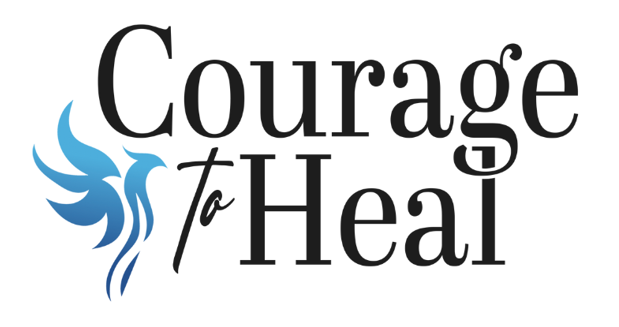Behind Closed Doors: Understanding and Overcoming Family Dysfunction
We all want to believe our family is "normal." But here's a surprising statistic: research cited by family dynamics expert John Bradshaw found that approximately 96% of all families are to some degree dysfunctional. That's right - almost all of us come from families with some level of dysfunction!
But what exactly makes a family dysfunctional, and how does it affect everyone involved? Let's take a closer look at this common but often misunderstood family dynamic.
What Is a Dysfunctional Family?
There isn't one agreed-upon definition of a dysfunctional family. Generally speaking, though, a dysfunctional family is characterized by interactions that prevent family members from feeling safe, cared for, or healthy either physically or mentally.
Think of families like clocks or other systems - they're interactive units where each member impacts the others and the family as a whole. When this system isn't working properly, family members may be unable to develop closeness with one another or fully express themselves.
Signs Your Family Might Be Dysfunctional
Wondering if your family shows signs of dysfunction? Here are some common red flags:
Lack of communication: Family members struggle to express thoughts and feelings openly
Consistent conflict: Arguments and tension are the norm rather than the exception
Excessive secrecy: Important information is hidden or denied
Controlling behaviors: One or more members attempt to dominate others
Absence of emotional support: Family members' feelings are dismissed or belittled
Unhealthy connections: Codependency replaces healthy boundaries
Scapegoating: One member is consistently blamed for family problems
Unhealthy competition: Family members are pitted against each other
Role reversals: Children take on parental responsibilities
Weak boundaries: Rules are inconsistent or non-existent
Neglectful parenting: Parents are emotionally or physically unavailable
Abusive behaviors: Physical, emotional, or verbal abuse occurs
Substance use or abuse: Alcohol or drugs create ongoing issues
Dysfunctional vs. Toxic Families: What's the Difference?
It's important to understand that not all dysfunctional families are toxic. Dysfunctional families may struggle with communication, boundaries, and conflict resolution, but their behaviors aren't always abusive or destructive.
Toxic families, on the other hand, are characterized by harmful behaviors that damage the emotional and psychological well-being of family members. You can think of toxic families as a subset of dysfunctional families - all toxic families are dysfunctional, but not all dysfunctional families are toxic.
Common Examples of Family Dysfunction
Dysfunction varies widely between families, but these patterns appear frequently:
Parentification
Children taking on adult roles and responsibilities that aren't appropriate for their age. This might look like a 12-year-old who's responsible for taking care of younger siblings or emotionally supporting a parent.
Conflict
Constant arguments create an environment where children feel unsafe and overwhelmed. Children in these homes often develop anxiety or struggle with conflict resolution themselves.
Enmeshment
Boundaries between family members become blurred. Parents might become overly involved in a child's decisions, discouraging independence and creating anxiety when the child seeks autonomy.
The Effects of Family Dysfunction on Children
Growing up in a dysfunctional family can have profound and lasting effects. Research shows that children from dysfunctional homes face various challenges:
Emotional regulation difficulties
Without healthy role models, children may struggle to understand and manage their emotions. This can lead to problems with anger, fear, or sadness that persist into adulthood.
Mental health issues
Studies indicate that adults who grew up in dysfunctional families have higher rates of anxiety, depression, and substance abuse. These individuals may experience lasting emotional scars affecting their personal relationships and mental health.
Educational challenges
About 60% of children from dysfunctional families experience lower academic performance, 45% have higher dropout rates, and 30% struggle with concentration and attendance in school.
Long-lasting trauma
Children may exhibit symptoms like inattentiveness, defiance, or poor peer relationships that can mimic conditions like ADHD or oppositional defiant disorder.
Relationship patterns
Children from dysfunctional families may develop social inadequacies, spending an excessive amount of time in activities that lack in-person interaction, or may demonstrate aggressive behaviors toward peers.
Healing From Family Dysfunction
If you recognize patterns of dysfunction in your family, don't despair. Acknowledging the problem is the first step toward positive change. Here are some strategies that can help:
1. Engage in self-care
Take time for yourself to relax and recharge. Focus on activities that promote your well-being—whether it's exercising, meditating, journaling, or simply unwinding. Self-care isn't selfish; it's necessary for emotional healing.
2. Create a plan for dealing with conflict
In dysfunctional families, conflict often arises unpredictably. Having a plan for handling these situations can be incredibly helpful - for instance, deciding ahead of time when to step away from a family gathering if arguments break out.
3. Stay calm and avoid escalation
When conflicts arise with family members, try to remain calm and avoid engaging in heated arguments. Sometimes the best response is to disengage if a situation becomes too emotionally charged.
4. Find a therapist
A mental health professional can help you process your experiences, set healthy boundaries, and develop coping skills. Therapy provides a safe space to work through family-related trauma and learn new patterns of relating to others.
5. Focus on breaking the cycle
If you're a parent or planning to become one, addressing your past trauma is crucial. By developing healthy coping skills now, you'll be better equipped to form secure attachments with your children and guide them toward emotional wellness.
Moving Forward
Remember that healing from family dysfunction is a journey, not a destination. Be patient with yourself and celebrate small steps forward. While we can't change our past, we can change how it affects our present and future.
If you recognize your family in this post, you're not alone. The statistics show that most of us experience some level of family dysfunction. The good news is that awareness and intentional action can break dysfunctional patterns and create healthier relationships moving forward.




